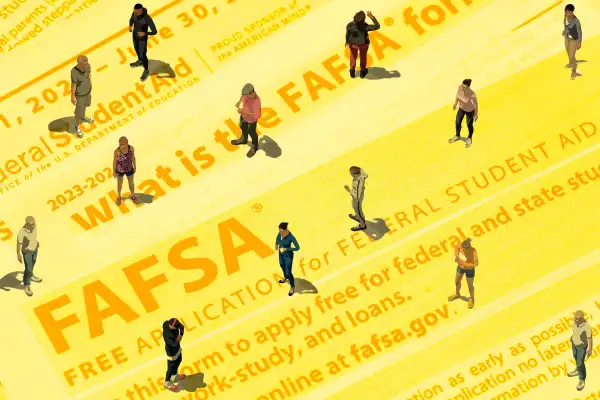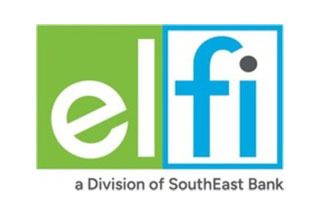FAFSA Beta Test: Trump Admin Touts 'Earliest Testing Launch' in History

The Department of Education says all students can now fill out the Free Application for Federal Student Aid, or FAFSA, early.
The form is typically released on Oct. 1 each year and remains open through Jun. 30 of the following year. This year, it's available sooner because of a beta testing period ahead of the official launch.
"The open beta for the 2026–27 FAFSA form is now live for ALL users," the Education Department announced on X Wednesday.
During earlier phases of the beta test that began last month, not all students could access the FAFSA. Now the department says anyone can start the form without the need to join a waiting list if they want to get a head start. The form is available on the Federal Student Aid website.
Education Secretary Linda McMahon already took a victory lap after broadening the FAFSA's beta test last month.
“Under President Trump’s leadership, our team has prioritized technical competence and expertise, which has led to the earliest testing launch of the FAFSA form in history," McMahon said in an announcement. "I am proud to certify that the form will launch on time this fall."
Under the Biden administration, the previous two FAFSA cycles were plagued by delays, glitches and errors. That's largely because former President Joe Biden's Education Department was tasked with overhauling the form as part of the FAFSA Simplification Act, which was signed into law during President Donald Trump's first term.
As part of the overhaul, the FAFSA form has shrunk from over 100 questions to about 30 or 40. While McMahon's statement that the FAFSA has not been tested this early before is true, most of the required changes to the form were already handled by the previous administration.
All the same, students and families will have extra time to fill out the form if they participate in the beta test ahead of the official launch next month.
Financial aid experts encourage all students, regardless of family income, to fill out the form each year — even if they don’t require need-based aid — because the application is also used to determine state aid, institutional aid, work-study awards, federal student loans and sometimes merit scholarships. Each year, nearly 20 million current and incoming college students fill out the FAFSA, according to federal data.
Completing it early could help families knock out a dreaded chore on a long college checklist sooner, but the beta version of the new form may include additional kinks applicants should be aware of.
“For those who do participate, they may experience some bugs or glitches in the process," says Stacey MacPhetres, senior director of education finance at College Coach, an admissions consulting firm.
Here’s what else to know about the beta test and the new FAFSA form.
What’s new with the upcoming FAFSA?
The latest version of the FAFSA continues a years-long process of making the form easier for families to fill out.
MacPhetres says that some updates this year include tweaks to make the form clearer and more accessible, as well as a streamlined identity verification process when students create a studentaid.gov account, which is required to fill out the FAFSA and opt in to the beta test.
According to Sarah Austin, a policy analyst at the nonprofit National Association of Student Financial Aid Administrators, it’s about to get much easier for dependent students to invite parents or guardians to fill out their portion of the FAFSA. She says students will no longer need their parents’ Social Security numbers or dates of birth to grant them access to the form.
All students will need is an email address to send them an invitation to fill out the form, and then the family members can input all the required information themselves.
“The contributor invitation process was a major concern, so we are excited to see how this improvement helps with FAFSA completions,” Austin says.
On the policy side, MacPhetres highlights two changes from President Donald Trump’s recent Big Beautiful Bill Act that affect federal aid eligibility. For one thing, assets for family farms and small businesses are now excluded from FAFSA reporting, she says. In addition, foreign income is now automatically included in earnings calculations for the Pell Grant.
With this year’s form, financial aid experts are hopeful the issues that have beset families the past two years will be relegated to the past.
“We don’t have any reason to believe we’ll run into the same kinds of issues we saw with the initial rollout of the streamlined FAFSA,” Austin says.
Should you fill out the FAFSA during the beta test?
MacPhetres always encourages families to fill out the FAFSA as early as possible to be sure they meet all priority deadlines set by colleges and because some state- and college-level aid is awarded on a first-come, first-served basis.
But filling it out this early has unique pros and cons.
As for the perks, starting the FAFSA sooner can provide families with more time to deal with any potential issues that arise while applying for aid. Austin notes that contacting the Federal Student Aid office will likely be much easier during the beta test, too, given the limited number of applicants.
“FAFSAs completed during beta testing are real FAFSAs,” Austin says. “While institutions are not required to act on this data immediately, it is possible that completing the FAFSA during the beta period will speed up the financial aid awarding process later" for college- or state-level aid.
She adds that for federal aid from the Education Department, officials have made it clear that beta testers won’t get any funding advantages.
On the other hand, glitches are far more likely during the beta testing phase. The entire purpose of the phased rollout is to find and fix any major issues before releasing the official FAFSA this fall.
Another drawback that MacPhetres mentions is that beta testers may need to resubmit certain information if any major changes are implemented to the final version of the FAFSA.
During a FAFSA beta test last year, Shannon Vasconcelos — a colleague of MacPhetres’s at College Coach — previously told Money that there’s no real rush to fill out the FAFSA during testing periods.
"I would let the department work out the kinks in the form before I was anxious to hop on there," she said. "Colleges are not going to set any financial aid deadlines so early that you couldn't complete it on the normal timeline."
More from Money:
The Best Colleges in America Right Now







